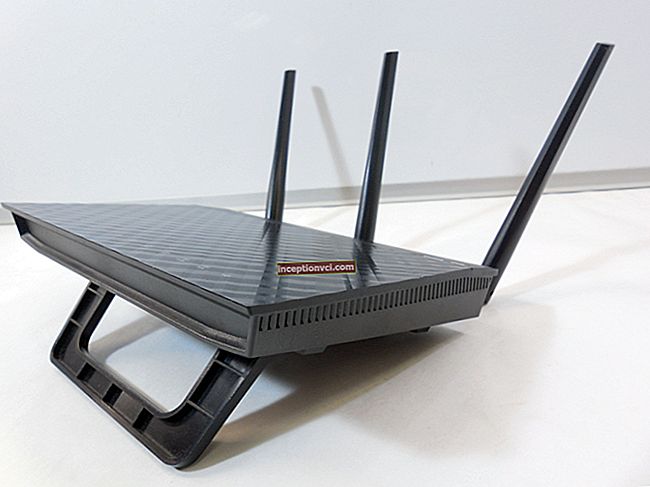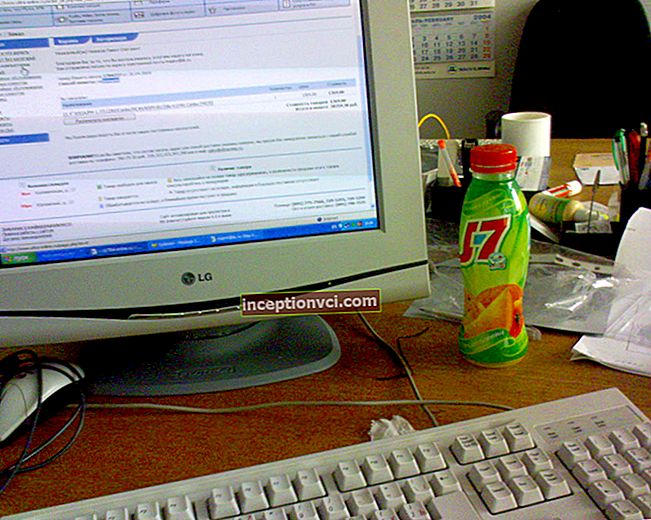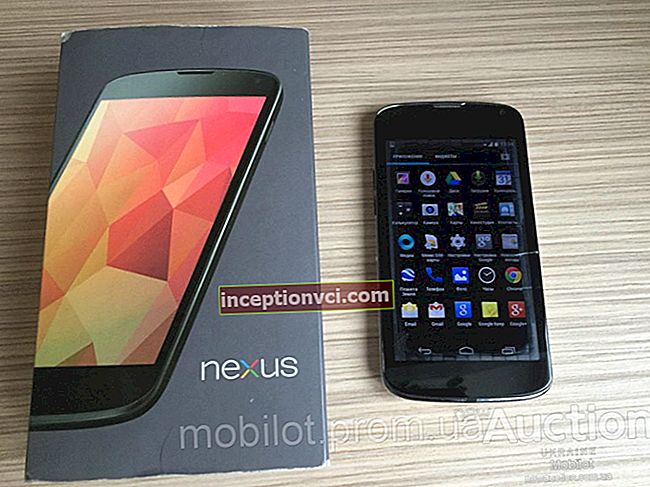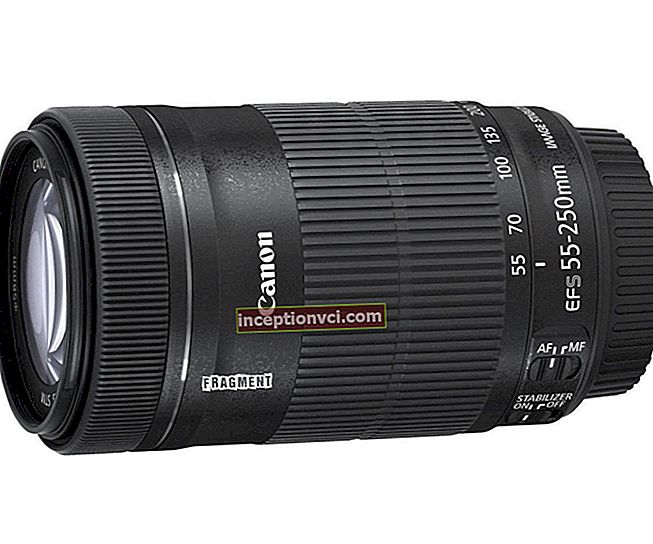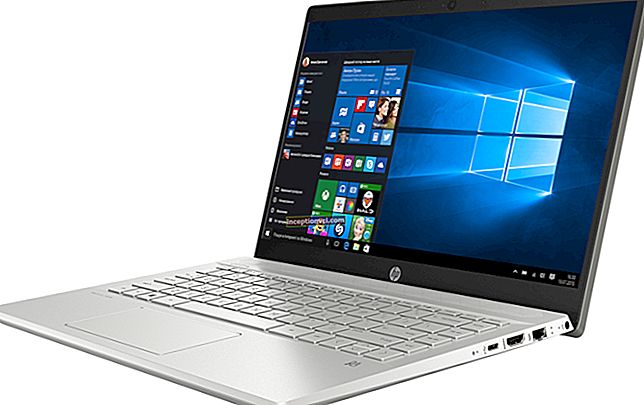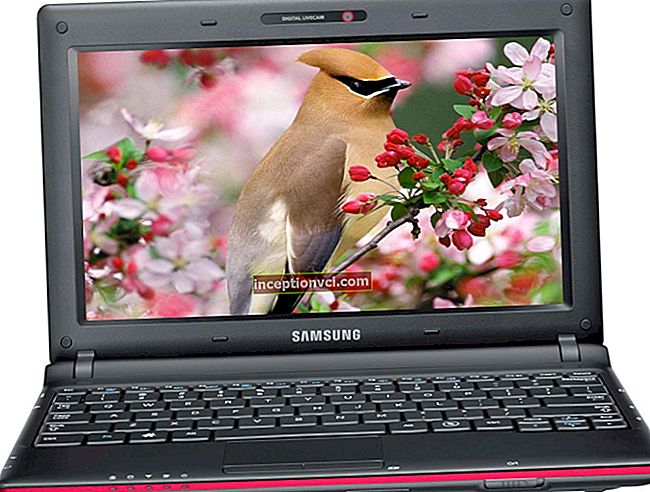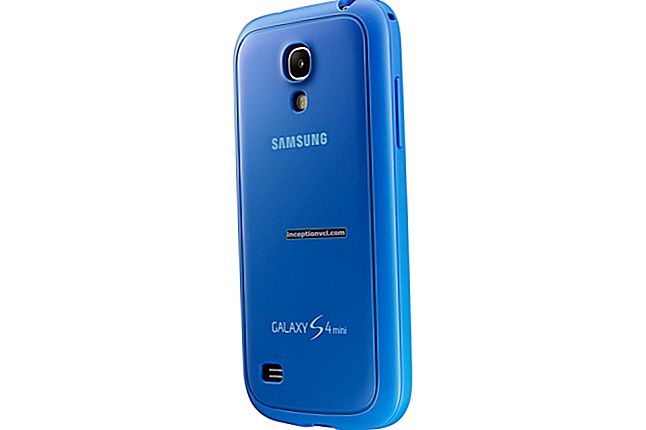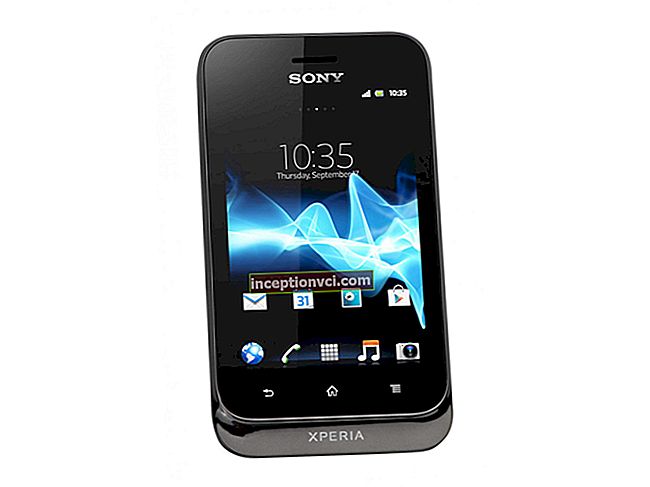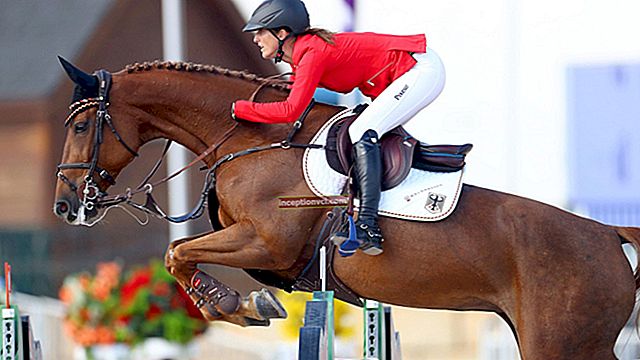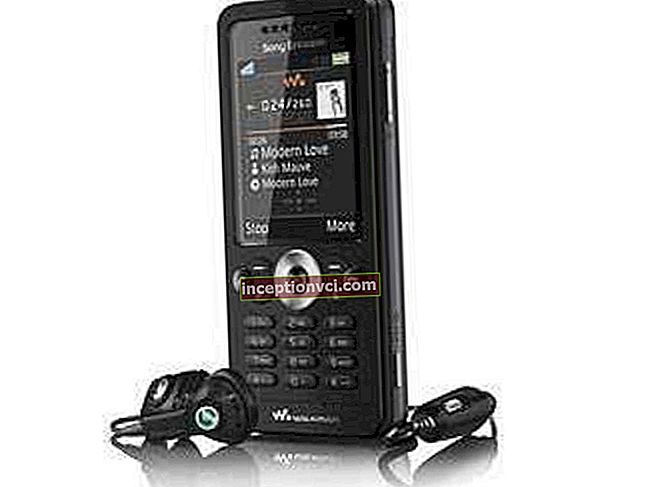Review Samsung Galaxy Tab 10.1 Tablet
Users who are constantly following the release of new tablet computers, of course, wondered what the new 10-inch tablet from Samsung, called the "Galaxy Tab 10.1", would be.
The first tablet computer of this line, in general, left a lot of good reviews about itself, but there were also those who complained about the excessively high price. I used this model, but, unfortunately, I did not dare to study it in detail, and for a fairly understandable reason: I do not accept seven-inch tablets. In my opinion, the 7-inch display is “neither fish nor meat”. This is not a communicator, as it is too bulky (the classic size for a communicator is 3-4 "), but it is not a tablet either - it is too small.
And in the land of 10-inch tablets, no one could compete with the iPad, despite the fact that manufacturers worked tirelessly trying to catch up with the stylish and sleek white "ideal" from Apple. I am generally silent about Chinese 10-inch tablets on antediluvian versions of the second android, because this is far beyond my understanding (especially models with resistive screens).
Although, even the well-known manufacturers of tablets on the same second Android, nothing good came of it. Consider, for example, the Archos 101 internet tablet. And here the problem was completely systemic: even if the corresponding hardware came out, which no one could release, the main bottleneck was Android 2.x itself - a system designed for phones, not tablets. It worked on tablets, but the interface, controls and much more - it was no good.

Archos 101 internet tablet
You might say, what about Apple? The famous iOS works on both iPad and iPhone. This did not cause any inconvenience - quite the contrary.
First, it's Apple. Very good engineers work there. In design and adaptability, they have no equal - you cannot argue with that. Secondly, do not forget that Apple creates devices in a rigid combination of software and hardware - that is, the developer of the operating system knows exactly what hardware component it will stand on. Thus, an amazing "adaptability" of the OS for hardware has been achieved, which gives considerable advantages.
For almost all competitors, this is not the case. Android under the leadership of Google is developed by some people, hardware is completely different. The maximum that manufacturers are capable of is to create some kind of software add-ons for their offspring, no more.
But back to Android. As you know, the developer took care of creating a special version, specifically for tablet PCs. Android 3.0 was named Honeycomb. For the first time this operating system appeared on the Motorola XOOM tablet. I think no one expected a flagship tablet from Motorola, but XOOM cannot ignore the hardware (if we forget about a couple of quite controversial engineering solutions), the battery really pulled out 10 hours of Internet surfing and 8.5 hours of viewing photos and videos. Here, either Android did not catch up with the time, or the tablet was ahead of it - the whole picture was terribly spoiled by a very crude operating system, the main functionality of which did not even cover the basic needs of pragmatic users, and software and applications written for the second version were hardly launched on it ...

Motorola XOOM
Motorola XOOM in the field of 10-inch tablets based on Android of the third version has been replaced by 3 more models. This is the already on sale ASUS EeePad Transformer (I was very interested in this model, I will definitely test it), Acer Iconia Tab A501 (I only got a similar version for Windows 7 Tab W500), and the culprit of this review is the Samsung Galaxy Tab 10.1.
Having finished the prelude, I'm going to tell you what the Samsung Galaxy Tab 10.1 (GT-P7500) tablet itself is like, and the Android 3.1 Honeycomb operating system installed on it.

Samsung Galaxy Tab 10.1
Tablet specifications Samsung Galaxy Tab 10.1
CPU - dual-core Nvidia Tegra 2 1 GHz.
Operating system - Honeycomb (Android 3.1).
Display - 10.1 inches, resolution - 1280x800 (WXGA), capacitive, multi-touch, PLS.
RAM - DDR2, 1 GB.
Built-in memory - 16 (there are also models with 32 and 64) GB.
Interfaces - 1x30pin USB, 3.5mm headphone.
Wireless networks - Bluetooth 2.1 + EDR, WiFi (802.11 a / b / g / n).
Mobile Internet - GPRS, EDGE, HSUPA, HSDPA, GSM900 / 1800/1900.
SIM card slot - regular mini-SIM.
Card reader - absent.
Gps - available (Assisted GPS).
Webcam - above the display 2 Mp, on the back 8 Mp with flash.
Sensors - accelerometer, gyroscope, compass, light sensor.
Battery - 6860 mAh, non-replaceable.
dimensions - 256.7x175.3x8.6 mm.
Weight - 565 grams.
Compared to Motorola Xoom - almost everything is the same, the weight is a little less - 565 grams versus 730, and the device itself is much thinner - 8.6 versus 13 mm. At XOOM, the connection to the mobile Internet was carried out only through the provider Verizone, but here - through any.
Equipment
I really can't even imagine what the package is, I got my hands on a test sample (sample). But it is clear that the bundle in any case includes a power adapter and a special 30-pin USB cable, since the tablet does not want to charge from a computer USB port (only in the off state, but charging takes a lot of time).
The 30-pin connector itself reminds me of something very much, but I can't remember what exactly.

My copy was equipped with a cover, which, as I understand it, is not included in the kit, but must be ordered separately. The cover looks very nice and is convenient in practice. The tablet is fixed in special plastic corners, when closed, the cover resembles a thin folder, and with the help of a special slot and stand, the cover can fix the tablet in 2 versions: half lying and standing.

The cover itself

Tablet closed

Standing tablet

Half-recumbent tablet position
Management and appearance
Visually, a tablet looks a lot like an iPad. (this can only be taken as a compliment)

Doesn't it look like anything?
Only iPad with portrait orientation: the power activation key and USB output are made in narrow ends, and here - in wide ones, so the tablet from Samsung is in landscape orientation.
The top side is completely covered with glass, the back cover is white plastic, the ends are metal.

Backside
The tablet is really very thin, and thanks to the bevels of the ends, it looks even more like a second iPad.

Tablet at an angle
Under the top cover there is a SIM card slot, headphone interface, volume buttons, power activation key.

Top edge
The speakers are located on the left and right ends, on top.

Speaker
Perhaps you have a question - "What is there with the control keys?". But nothing - the manufacturer completely abandoned them. Although, this is due to Android 3.0 - it has soft touch buttons, which is why physical keys on tablets are not made for the "three". I even liked this idea.
And where are all the slots for memory cards, USB ports and the like, you ask, what makes most tablets "advantageously" different from the iPad? They are not here. Galaxy Tab 10.1 doesn't even support memory cards. Almost pure iPad, the same minimalism.
Let us recall not very old events, when everyone was laughing at Yabloko and saying that a tablet had no USB ports, a card reader, a removable battery, etc. - this is some kind of misunderstanding, and only then it dawned on everyone in the name of what Apple did exactly that. Now, everyone is copying Apple's ideas - why not “steal” good solutions?
Display
The screen here is PLS, and not IPS, like that of the iPad (as Samsung said, this is an alternative to IPS, but of sufficient quality). The brightness is great - at maximum brightness indoors, the monitor is simply painful to look at. Viewing angles are worse than those of the iPad (which is not surprising), but this is bearable: at an angle, the contrast drops, but it is almost imperceptible. In direct sunlight, the screen fades, much like the iPad.
There is no oleophobic coating, but the iPad also has little use for it, so the screens are smudged almost the same.
Automatic brightness adjustment is not a fountain here - just like in Motorola XOOM. Based on this, we can conclude that this is a property of the operating system, not hardware.When the automatic setting is selected, it often happens that at a certain moment the screen brightness drops sharply, and then, for a completely incomprehensible reason, it is restored again. Therefore, I prefer to set the brightness manually - it's more reliable that way.
Multitouch works everywhere, and very smoothly and efficiently - I did not notice any difference from the iPad. The same situation is with the screen rotation - it rotates on all four sides quickly and smoothly. As I understand it, the screen did not rotate 180 degrees in the 7-inch model.
With multitouch, one useful innovation has appeared - certain gestures are supported. If you put two fingers on the display (for example, the thumbs of both hands), when you tilt the tablet away from you, the scale will decrease, when you tilt it towards you, it will increase.

Movement configuration
Working with the device
Now I will talk about what's interesting in the third version, as well as how everything looks on the reviewed tablet.

Basic desktop
This is the main, third in a row, desktop. There are 5 of them in total - two to the left and two to the right.
Touch control buttons are located on the left side - "Back", "Home", "List of recently launched applications", and a new button "Take a screenshot of the monitor". Screenshots are not always taken - for example, when the notification area window is enabled, the screenshots button, inevitably, is intended to close this window.

List of active applications
There are times when you can install software tailored for the second version. A menu button also appears next to the four buttons. Although in Android 3.1, the menu is usually located in the upper right corner.
An interesting innovation in this version is the ability to call a kind of dock panel. In the center of the bottom panel there is a special arrow, clicking on which brings up a dock panel with icons.

The dock itself
At the same time, the control buttons and the notification area disappear, only the down arrow remains, which must be pressed to restore the usual look of the desktop.
There are 6 icons in the dock: calendar, task manager, notes, world clock, music, calculator. These icons include smaller versions of the respective applications - something like widgets. Here, for example, is the task manager - it allows you to quickly and easily completely clear the RAM or unload any application.

Task Manager
By clicking on the notification area, a very convenient window is displayed: the notifications themselves with the ability to hide them, display brightness, GPS, wireless networks, sound, screen rotation ...

Notification window
Applications installed on the tablet are called using the key located in the upper right corner.

Various applications
If you press and hold your finger on any icon, the desktop preview will appear and you can place the "active" icon on the desktop you want.
Editing desktops is carried out using the "+" key located on the right side of the application call. Everything looks very clear and convenient: on top - different desktops, on the bottom - options, wallpapers, application shortcuts and widgets.

Section "Widgets"

Application shortcuts section

Section "Wallpapers"

Section "Options"
Now let's look at the work of standard tablet applications.
Virtual keyboard
The keyboard is needed in a huge number of applications, so let's see how it looks.
Everything is very simple, no frills. Cyrillic is normally supported (like other languages), the keyboard is comfortable and large. Special characters (all sorts of commas-periods) in their places, even on the Russian layout (on the iPad, this problem has already gotten everyone)

Russian layout
By long pressing each symbolic button, you can call up a complete list of the corresponding symbols. There is a separate key with a face, a long press on which brings up a full list of emoticons.

Smileys
Simply put, this is the first Android keyboard that I didn't want to immediately change to something else.
the Internet
The Internet browser is very convenient: fast, smoothly scrolling, supports tabs, perfectly scales.
When you click on the button to create a new tab, large icons of the most frequently visited sites are displayed. Bookmarks can be edited, folders are supported.

Bookmarks
Galaxy Tab takes RSS feeds and adds them to Google Reader. It is precisely through him that these channels are convenient to read. But other applications can be used as well.

RSS feed (Google Reader)
post office
I tested the mail on a Google account. Everything seems to be fine, but when creating a new letter, there is not enough opportunity to call the camera and attach the photo taken right there.

post office

Writing a new letter
Audio
With music, too, everything is fine - various types of sorting and selection, all kinds of playback modes. Convenient and informative.

Reproduction and selection

Playback
Video Here, in comparison with version 3.0 on Motorola XOOM, there is a basic video player, and it is quite acceptable. The selection of videos is carried out by preview, folders and list. Selection of videos The playback is very good, WMV7, WMV8, WMV9, MPEG-4, DivX, Xvid, VP8, H.264 and H.263 codecs are supported, in WMV, AVI, M4V containers. Even the notorious mkv is played, but that slows down noticeably. Play video in AVI format External Russian subtitles are perceived normally. I was very impressed by the fact that in WMV the tablet reproduces Full HD (in other words, 1080p) without any brakes. HD Roller YouTube There are no problems with YouTube. Various types of sorting, any playback (including HD). Selection Playback Picture Pictures are grouped by album, time, tag, location and size. Folder preview While viewing a full-size picture from below, a preview can be called up, the picture can be sent using various services - the menu on the right side. View images (full screen) There is also image processing. Treatment Office Utilities In a tablet, this is not the most important thing, but it is still convenient to be able to work with various office applications - spreadsheets, text editor, presentations. All this is called PolarisOffice. Must be compatible with Microsoft Office formats. PolarisOffice I tested it - the thing is still very crude and primitive. In the editor, text can be typed in two or three ways. There is one curious glitch with the Cyrillic alphabet - in any case, a space is inserted after each capital letter. This does not happen with the Latin alphabet. Text Well, and here it was not without some troubles - the created file cannot be sent by mail. Games Having fun on your tablet is very important. I have played several games. Everything is fine: everything explodes (including pigs), everything flies (birds) and does not slow down. Games Settings The settings section almost repeats that of the iPad (including in design), it pleases, the best has not yet been invented. Mobile Internet Compared to the earlier Galaxy Tabs, which had a full-fledged mobile phone mode, everything here is again done as in the iPad. The SIM-card is installed only so that the tablet has access to the Network via GPRS-3G-EDGE. Camera As already mentioned, there are two cameras: a 2-megapixel front one for video calls, and an 8-megapixel one on the back. The camera's interface is quite simple. But it's also good - why complicate a simple interface. By the way, the shooting is tolerable. If you set the mode correctly, the automatic WB works fine. As usual, focusing problems. Under medium light conditions (room) the image is noticeably noisy. The result is quite expected. Picture taken with a tablet The video is recorded without jerks, but in low light it makes a terrible noise - an eerie grain. Performance The tablet feels fast enough - I didn't notice any particular brakes. Using the Quadrant program, I drove the Galaxy Tab - the average index was 1993, while the Motorola XOOM was 1926. The table compares the index with phones, which, of course, is not very correct. However, I have not yet found a similar test for Android tablets. Comparative analysis Autonomous work Now, about the main thing.The battery life is an extremely important parameter for tablets, because it is a portable device. The developer promised ten hours of continuous work (Internet surfing and the like). It should be said that conducting such tests on tablets running Android 3.1 is a real torture, because the manufacturer did not allow the screen to turn off automatically. The maximum possible time is 30 minutes, and at the time of the test, this gizmo just turned off after half an hour. Therefore, I had to go to the device every half hour and poke my finger into the tablet so that it would not fall asleep. Therefore, I did not conduct a bunch of battery life tests, but conducted only 2 according to the standard, for most reviews, scheme. 1. Watching videos - sufficient brightness of the display without automatic adjustment, playing a movie of standard DVD-resolution. 2. Internet surfing - emulation of surfing the Internet (a page is launched in the browser, which is fully updated every 2 minutes), WiFi is turned on. On the first test, the tablet lasted almost a full eight hours - quite a decent result. In the second test, it turned out almost 10 hours - as promised by the manufacturer. The result is almost completely identical to that of Motorola Xoom - everything is the same, only the video lasted half an hour longer. The price of the issue Sadly, the main criterion for most buyers is price. It is for this model (and there are several of them) that the price is 5700 hryvnia. Without a doubt, the Samsung Galaxy Tab 10.1 fully fulfills every penny invested in it. Order your tablet at F.ua store and you will receive it as soon as possible. conclusions I liked this device very much. Of the Android tablets I've seen, this is perhaps the best. Slim, compact, lightweight, quite powerful, and with a very impressive battery life. The only thing I would like to see in this tablet is support for memory cards - just so that you can buy an inexpensive model with 16 Gb (not 32 or 64) and be able to carry movies with you on the road on SD cards. I was also pleased with the fact that in the out-of-the-box version, the Galaxy Tab already meets most of the tasks faced by an ordinary user - in the case of Android, this is not always the case. I even had a great desire to purchase this copy - to follow the development of the third version of Android and programs for it. Because, despite some shortcomings, this system already looks very promising, and it has its own advantages compared to its main competitor - iOS. 

















